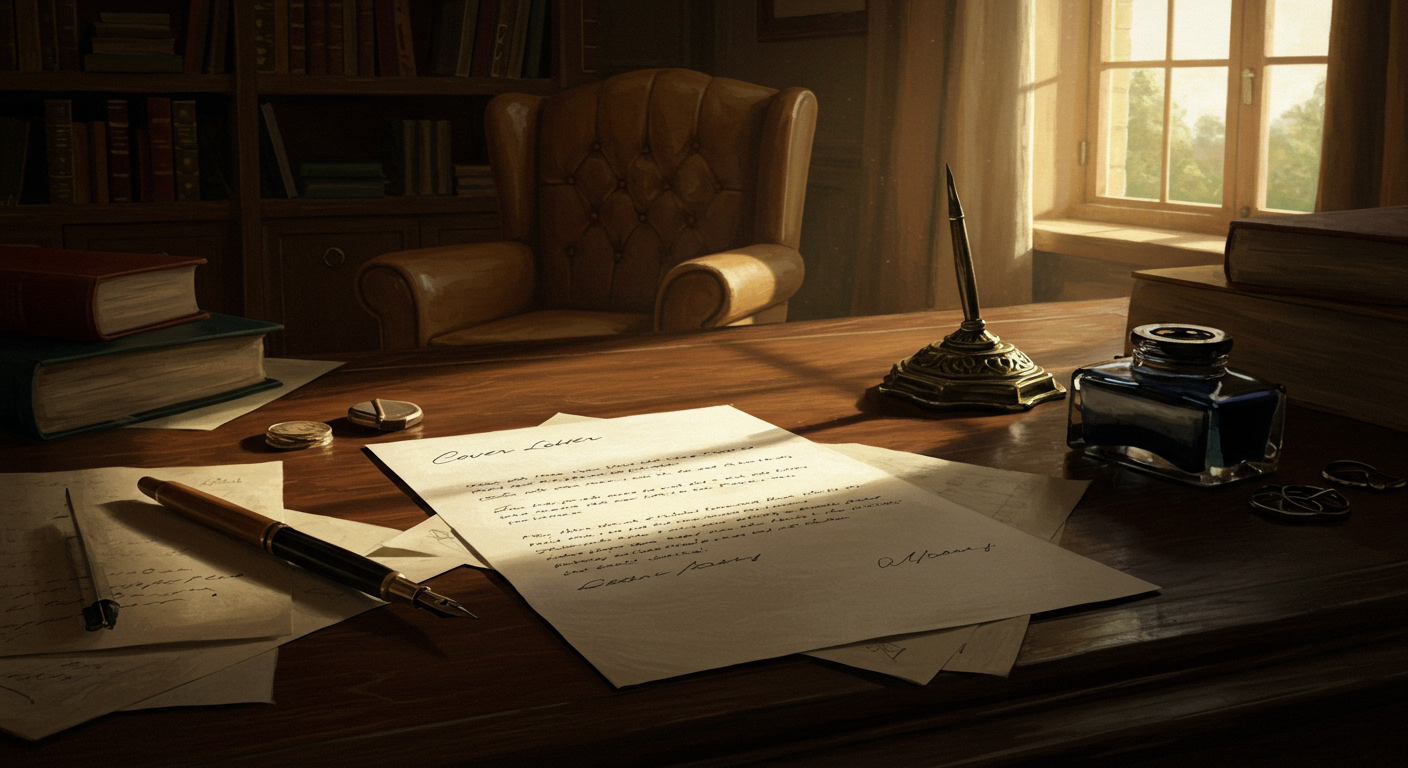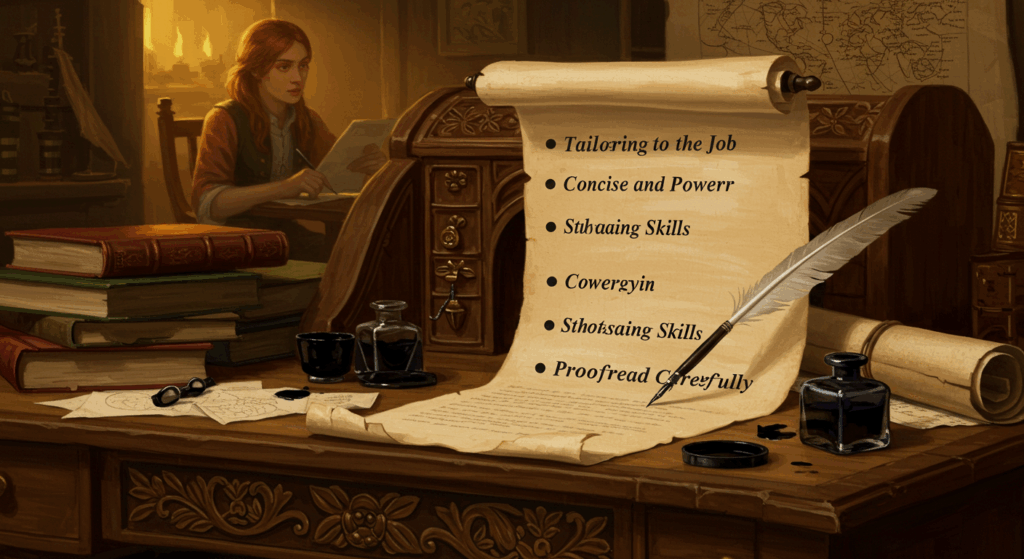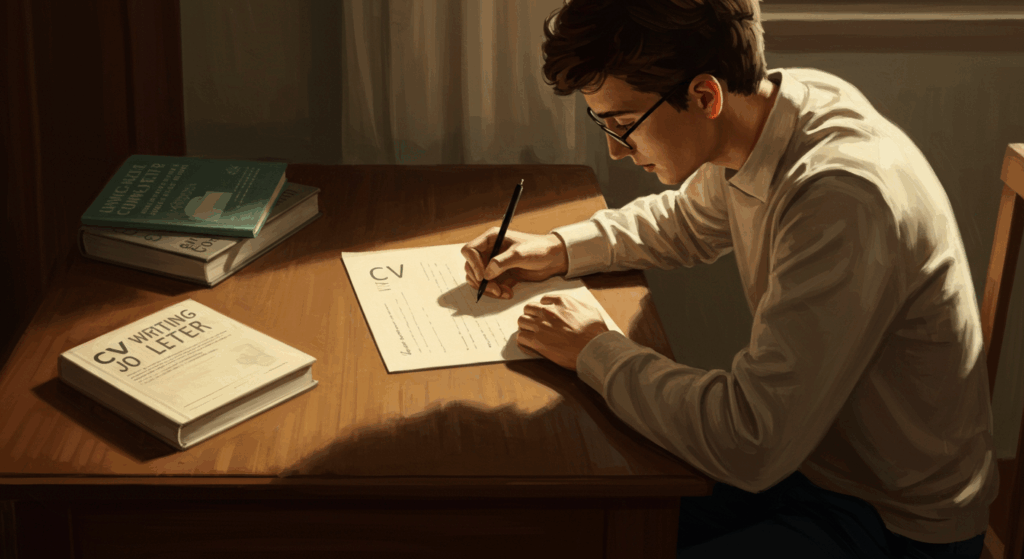Alright, let’s not sugarcoat it — writing a CV letter (a.k.a. job application letter, cover letter, or whatever HR decided to call it this week) is kinda stressful. Like, worse than waiting to see if your crush texts back after you accidentally liked their Instagram story from 2019.
But here’s the truth: a CV letter doesn’t have to be this scary, formal essay that feels like you’re begging for a job. Think of it more like telling your story, just in a way that makes sense to a hiring manager who’s probably tired, over-caffeinated, and scrolling through a mountain of applications while secretly daydreaming about their next vacation.
The trick? Break it down into three parts: introduction, content, and closing. That’s it. Three chunks, like episodes in a mini Netflix series. Once you see it that way, the whole thing feels way less intimidating.
So, let’s grab a coffee (or boba, or whatever your vibe is), and I’ll walk you through how to write a CV letter that actually sounds like you — not a boring template everyone else is using.
Why CV Letters Still Matter (Even in 2025)
Let’s address the elephant in the room: do recruiters even read these things? I mean, half the time it feels like you’re sending your heart and soul into a black hole of job portals and “We’ll be in touch” auto-replies.
But here’s the deal: while not every hiring manager reads every single CV letter, many still do. Especially if you’re applying for roles where communication, personality, or culture fit matter. And even if they skim it? That skim might be the differennce between your resume landing in the “maybe” pile instead of the “nah” one.
Think of your resume as the Spotify playlist of your skills — the facts, the highlights, the structure. Your CV letter, though? That’s the behind-the-scenes commentary. It’s where you add context, show enthusiasm, and let your personality slip through just enough to make you memorable.
Step One: The Introduction (Your Hook)
Your introduction is like the first 10 seconds of a TikTok — people decide fast whether they’re gonna keep watching or scroll.
A weak intro is:
“I am writing to apply for the position of…”
Yawn. Nobody cares.
A stronger intro is:
“I’m thrilled to apply for the Marketing Assistant role at [Company]. I’ve been a fan of your quirky TikTok campaigns (the one with the dancing alpaca? genius), and I’d love to bring that same creativity to your team.”
See the difference? One feels like a boilerplate letter. The other sounds like a real human.
Tips for Your Introduction:
- Drop the “to whom it may concern.” If you can find the hiring manager’s name, use it. LinkedIn stalking = encouraged.
- Mention the company. Show you’ve actually done your homework.
- Add a little enthusiasm. No need to sound like a hypebeast, but let them know you care.
Step Two: The Content (The Meat of the Letter)
This is the part where most people either overshare (like it’s their high school diary) or undershare (basically rewriting their resume). The sweet spot? Giving just enough info to connect the dots between you and the job.
Structure Your Content Like a Story
A simple way to do this is the Past–Present–Future method:
- Past: Talk about what you’ve done before that’s relevant.
- Present: Share what you’re currently doing.
- Future: Explain why this specific job excites you.
For example:
“As a social media intern at [Company], I grew engagement by 40% in three months. Currently, I freelance for small businesses, designing TikTok campaigns that reach thousands of viewers. That’s why I’m pumped about the chance to join [Company] — I admire how you blend humor with strategy, and I’d love to help take that even further.”
Clean, right? It gives them a story, not just bullet points.
Things to Add in the Content Section:
- Relevant achievements. Numbers pop (like “increased sales by 25%” or “managed a $10k budget”).
- Skills they asked for. Read the job posting carefully — if they want someone who knows Canva, mention Canva.
- Connection to the company. Prove you’re not just sending this to 200 places at once.
Step Three: The Closing (Don’t Be Awkward Here)
The closing is your mic-drop moment. Sadly, most people waste it with “Sincerely, John.” Snooze.
Instead, your closing should do three things:
- Reaffirm your interest.
- Thank them politely.
- Suggest next steps.
For example:
“I’d love the chance to talk more about how I could help the team at [Company]. Thanks so much for reviewing my application — I’m excited about the possibility of working together.”
Confident, warm, not desperate. The equivalent of texting, “Had fun, let’s hang again” instead of “???”
Extra Sprinkles: Making Your CV Letter Shine
- Keep it short. One page max. If it’s longer, they won’t read it.
- Write how you talk (but polished). You want to sound natural, not robotic.
- Match the vibe. If the company is formal (law firms, banks), tone it down. If they’re creative (startups, media), show a little flair.
- Don’t repeat your resume. Expand on it instead.
- Proofread. Typos happen (trust me, I had three before I even finished this paragraph). Just don’t let sloppy mistakes ruin your first impression.
Example CV Letter (Use This As Inspiration)
[Your Name]
[Your Address]
[Your Email]
[Your Phone Number]
[Hiring Manager’s Name]
[Company Name]
[Company Address]
Dear [Hiring Manager’s Name],
I’m excited to apply for the [Job Title] role at [Company Name]. I’ve followed your team’s work on [specific project], and I admire the way you balance innovation with authenticity.
In my previous role as [Your Position], I [achievement]. Right now, I’m [current role/project], which has strengthened my skills in [relevant skill]. I believe these experiences make me a great fit for the position, especially since I share your passion for [something about the company].
I’d love the chance to bring my energy and ideas to your team. Thanks so much for considering my application — I look forward to hearing from you.
Best,
[Your Name]
FAQs About CV Letters (Because You Probably Still Have Questions)
Do I always need to write a CV letter?
Not always. Some companies don’t ask. But if they do, or even if it’s optional, send one. It shows effort.
What if I don’t have much experience?
Lean on transferable skills (communication, teamwork, problem-solving). Share a story from school, volunteering, or side projects.
Should I use AI to write my CV letter?
Honestly, you can use tools for inspiration, but always add your personal touch. Hiring managers can sniff out “robot speak” from a mile away.
How formal should I be?
Depends on the company. Startup? Casual. Government job? More formal. Match the vibe.
Common Mistakes (And How to Avoid Them)
- Writing a novel. (Keep it short.)
- Copy-pasting the same intro for every job. (Personalize it.)
- Forgetting to proofread. (Spellcheck is your friend.)
- Being too casual. (This isn’t Snapchat.)
- Forgetting the introduction, content, closing balance. (Structure saves lives, okay maybe not lives, but definitely applications.)
Final Thoughts: You’ve Got This
Look, writing a CV letter isn’t the most fun thing in the world. (I’d honestly rather rewatch The Office for the 10th time.) But it’s worth it. It’s your chance to show you’re not just another resume in the pile — you’re a real human who actually cares about the job.
Remember the formula: introduction, content, closing. Keep it authentic, keep it concise, and don’t stress about making it “perfect.” A slightly imperfect but genuine letter will beat a stiff, soulless one any day.
So take a deep breath, open that Google Doc, and start typing. The job you want might be one CV letter away.
Now go crush it — you’ve got this ✨









